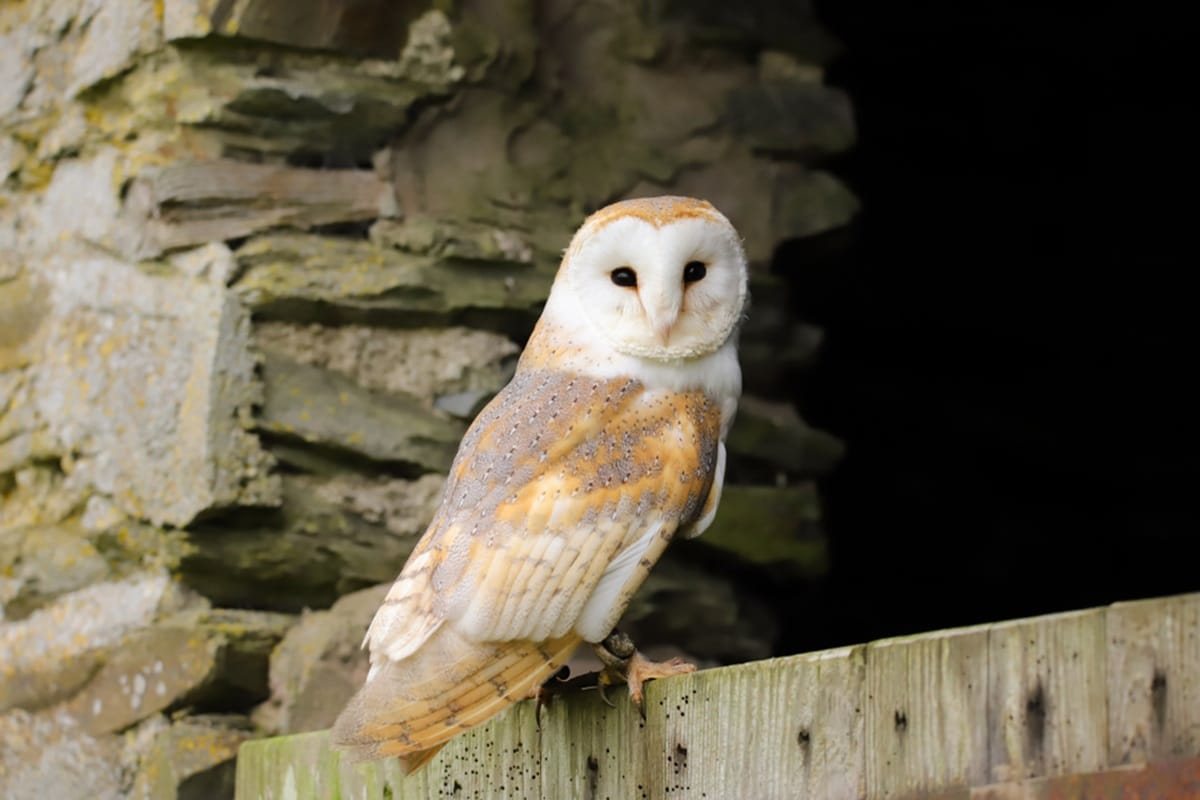
Wildlife and Countryside Act 1981
What is the Wildlife and Countryside Act 1981?
The Wildlife and Countryside Act 1981 is an applicable piece of legislation in the United Kingdom that affects anyone in England, Scotland and Wales barring certain exceptions. Northern Ireland, however, adheres to a separate piece of legislation titled ‘the Wildlife Order’.
Both the Wildlife and Countryside Act 1981 and the Wildlife Order share the same aim of limiting and prohibiting actions that could impact wild animals during open or closed seasons. More specifically, within the act, people are restricted from causing harm to named protected species, even if it is considered entirely unintentional.
Certain methods of harming animals and breaching the rules of the 1981 Wildlife and Countryside Act would include any deliberate or inadvertent attempt to kill, disperse, capture, injure, harm or disturb considered endangered species, as well as any form of interference on their carcasses, eggs, habitats, nests or roosts.
Why Was the Wildlife and Countryside Act 1981 Introduced?
When the Act was first introduced, the primary reason for it was to integrate existing laws that apply to EU nations into UK legislation. Enacting the Wildlife and Countryside Act 1981 would mean initiating the Birds Directive – the oldest piece of EU legislation involving the environment that protects all 500 wild bird species present in Europe – and the Bern Convention – a legal instrument that protects natural heritage through Europe – but in Great Britain. It also includes a version of the European Directive on the Conservation of Wild Birds that applies solely to the UK.
Active pieces of legislation such as the 1981 Wildlife and Countryside Act enabled the UK to introduce sections of law from the European Union and make them applicable to the nations within Great Britain. It also guaranteed that the UK wasn’t relying too heavily on laws that solely apply to EU nations – a consideration that became crucial once the UK departed the EU as part of Brexit in December 2020.
Is the Wildlife and Countryside Act 1981 Effective?
Originally launched in October 1981 after gaining royal assent as a fairly simple source of native wildlife law that was applicable to England, Scotland and Wales, the Act underwent numerous changes to outline key details, adapt to changes to environmental law, and involve other relevant pieces of primary legislation.
For example, since its inception, it has faced positive changes and integration with the Countryside and Rights of Way (CRoW) Act 2000, and the Natural Environment and Rural Communities Act 2006 in England and Wales. Likewise, it has shown consideration to pieces of legislation in other home nations, such as the Nature Conservation Act 2004 and the Wildlife and Natural Environment Act 2011 in Scotland, and the Nature Conservation and Amenity Lands Order 1985, the Wildlife Order 1985, and the Environment Order 2022 in Northern Ireland.
Over more than four decades, the Wildlife and Countryside Act – sometimes to this day incorrectly named the ‘Countryside and Wildlife Act 1981’ – has changed the legal picture for domestic legislation for the conservation of wild animals and prevented unnecessary and avoidable harm from coming to protected native or non-native species and their natural habitats. The Act is enforced by the UK government and remains an obstacle to developers and anyone else posing potential harm to present listed wild plants and animals, and following countless changes and improvements, it is just as relevant today as it was in the early 80s.

Different Schedules of the 1981 Wildlife and Countryside Act
Across the Act, there are 17 schedules split across four parts, with the parts covering:
- Wildlife
- Nature conservation
- Public rights of way
- Miscellaneous provisions of the Act
Within schedules of the Act are lists of certain mammals, other animals and plants that are protected by the Act, and further detail about the protections in place. Below, we have explained certain key schedules from the Act:
Wildlife and Countryside Act 1981 – Schedule 5
Schedule 5: Section 9.1 – Animals which are protected from killing and taking
Section 9.1a – animals which are protected from intentional killing and injuring
Section 9.1b – animals which are protected from taking
Schedule 5: Section 9.2 – Animals which are protected from possession
Section 9.2 – animals which are protected from being possessed or controlled (live or dead)
Schedule 5: Section 9.4 – Animals which are protected from disturbance
Section 9.4a – animals which are protected from intentional damage or destruction to any structure or place used for shelter or protection
Section 9.4a (whales) – Cetacea/ basking shark that are not allowed to be intentionally or recklessly disturbed
Section 9.4b – animals which are protected from intentional disturbance while occupying a structure or place used for shelter or protection
Section 9.4c – animals which are protected from their access to any structure or place which they use for shelter or protection being obstructed
Schedule 5: Section 9.5 – Animals which are protected from sale
Section 9.5a – animals which are protected from being sold, offered for sale or being held or transported for sale either live or dead, whole or part
Section 9.5b – animals which are protected from being published or advertised as being for sale
Wildlife and Countryside Act 1981 – Schedule 9
Schedule 9 – Animals and plants which are established in the wild
Section 9: Part I (1) – Animals which are established in the wild
Schedule 9: Part II (2) – Plants which are established in the wild
Who Enforces the Wildlife and Countryside Act 1981?
Pieces of environmental legislation such as the Wildlife and Countryside Act 1981 as amended are regulated by a combination of the police, Natural England / Natural Resources Wales / Scottish Natural Heritage (based on location), the Environment Agency, the Joint Nature Conservation Committee, the Food, Farming and Countryside Commission (FFCC), the local authorities, the Partnership of Action against Wildlife Crime (PAW), various public bodies, and relevant organisations based on the endangered species in question.
Once an action breaking the rules of the Act has been carried out, the offence will inevitably result in a police investigation. The police will enforce part 1 of the Act, as it focuses on the fundamental wildlife protection over wildlife species and what exactly necessitates a breach of the rules. In fact, dedicated departments of the police specialise in breaches of environmental and wildlife laws, such as the National Wildlife Crime Unit (NWCU) and Wildlife Crime Officers (WCOs)
Wildlife and Countryside Act 1981 Penalties
Any law relating to the environment and wildlife are taken just as seriously as any other piece of active legislation. Even in respect of a breach of the Act involving a single animal or habitat, the person responsible would be liable to pay a potentially unlimited fine, spend up to six months imprisonment, or possibly even both.
What Does the Wildlife and Countryside Act 1981 Protect?
Although the term ‘protected species’ is used a lot in relation to the wild creatures safeguarded by the Wildlife and Countryside Act, it isn’t solely in conjunction with just animals. As well as certain animal species, wild plants that are considered rare or valuable are also included, along with the habitats and other materials related to certain animals and plants listed within the Act.
Wildlife and Countryside Act Protected Species
Over time, the Wildlife and Countryside Act has been amended multiple times to include more species of animals and plants. Mentions of wild birds, the protection of birds and the conservation of wild birds is outlined first and foremost, as well as references to injured birds, migratory species, injured birds and the dependent young. However, there are actually far more wild animals and plants within the policy.
As the list currently contains numerous entries, instead of naming every species by scientific or common name, we will highlight the types of animal and plant species below:
Animals:
- Adders
- Badgers (also protected by the Protection of Badgers Act 1992)
- Bats
- Beetles
- Butterflies
- Crickets
- Dolphins
- Dormice
- Dragonflies
- Frogs
- Grasshoppers
- Leeches
- Lizards
- Martens
- Moles
- Moths
- Mussels
- Newts
- Otters
- Porpoises
- Sharks
- Shrimps
- Snails
- Snakes
- Spiders
- Squirrels
- Toads
- Turtles
- Voles
- Walruses
- Wildcats
- Worms
Plants:
- Algae
- Fungi
- Lichens
- Liverworts
- Mosses
- Vascular plants
For further information, see the full list here.
The Wildlife and Countryside Act 1981 and Planning
Ever since the Wildlife and Countryside Act 1981 was unveiled, there has been an established relationship between the special protection of animals and development projects. In any land or property development, protected species listed within the Act may be present, and if they are, the developer in charge of the planning project would be required to ensure that no harm will come to them as a result of the planned development works.
Additionally, the local planning authority simply will not even consider an application for planning permission without evidence that the site has been correctly inspected for occupancy of wild animal species and demonstration of compliance with the Act. Ecological surveys conducted by professional ecologists, however, will satisfy the planning department of the local council and meet the planning requirements needed to grant planning applications on the development site.

How Does the Wildlife and Countryside Act 1981 Impact Surveying?
Regardless of the current state of the development site, it would be advisable to book a Preliminary Ecological Appraisal (PEA) / Phase 1 Habitat Survey. Between an ecological desk study and a walkover survey, the ecological consultant in charge of the assessment will be able to find any existing protections, relevant national archives, and records of protected species on the site before surveying the entirety of the site for evidence of animal and plant species. All plant life and wildlife will then be recorded and detailed in a report, and the ecology report can be passed on to the local planning authority as part of the application for planning consent.
At the reporting stage, the ecological surveyor may suggest the need for further surveys on the site, particularly if endangered native or non-native species have been identified and an ecology survey specific to the ecological feature is needed to gather more information and offer guarantees to the local authority that they will be safe despite the proposed development. For wild birds and bats, a Preliminary Roost Assessment (PRA) / Scoping Survey would be needed, and based on the outcome of the survey, the ecologist may then suggest further surveys, such as a Bat Emergence and Re-Entry Survey (BERS) to determine the species of bat, entry and exit points, and likely roosting locations.
As for other protected species surveys, assessments for plant life include invasive species surveys for giant hogweed, Himalayan balsam, injurious weeds or Japanese knotweed, and assessments for wildlife include badger surveys, barn owl surveys, bat surveys, bird surveys, newt surveys, reptile surveys or other mammal surveys for dormice, otters or water voles. Alternatively, the ecological consultant may suggest other ecological surveys such as a Biodiversity Net Gain Assessment, an Ecological Walkover Survey or a BREEAM Assessment.
Advice on Choosing an Ecological Survey
In our 15+ years of providing professional and private clients with ecological surveys and reports, we are experts in meeting the requirements of pieces of legislation relating to protected species and the environment such as the Wildlife and Countryside Act 1981.
Our ecological surveyors can act as an authorised person on your site qualified to conduct ecological assessments, and with an advanced understanding of connected purposes within ecology such as legislation involving protected areas, the countryside and national parks, and factors taking wild animals into consideration in relation to planning, they will be capable of providing everything you need for your project.
Whether you are fully aware of the ecological surveys needed on your site, or if you need advice with choosing the correct ecology survey for your needs, our team can work out the most suitable approach based on the unique details of your site and project.
Call us using the number above or provide us with your specifications using our online quote form, and our team will give you a free quote. If you give us the green light, we can then send a licensed ecologist to your development site to undertake an ecology survey, satisfy the concerns of the local council, and get your project through planning.





